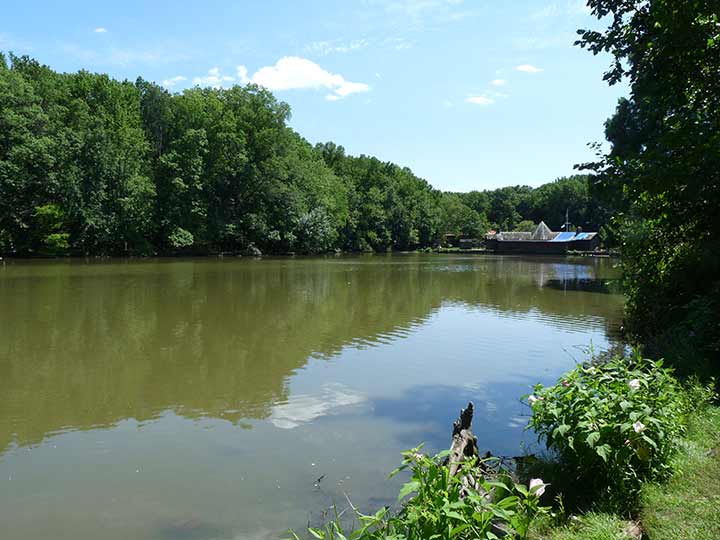
MENTION “Willowbrook” to anyone over 50, and the groundbreaking reports aired by reporter Geraldo Rivera in 1972 during his stint at WABC-TV, uncovering the brutal conditions inflicted on patients at Willowbrook State School will come to mind. The institute was shut down in 1987, and its campus was taken over in 1993 by the College of Staten Island.
There are still the ghosts of other former institutions showing their spectral raiment in the neighborhood, though. The abandoned Staten Island Farm Colony, the borough’s poorhouse, is here, and large sections of Seaview Hospital, some containing incredible terra cotta artwork, have been left to the elements for decades. The remains of old settlements can be found in Willowbrook Park.
The pond seen here can be visited near the park entrance at Victory Boulevard and Moroni Street; further ahead id the park visitor center and a carousel for the kiddies. In July 2021, I walked 9 miles around Willowbrook and Westerleigh, a figure I haven’t matched since. The brook Willowbrook Park is named for is mostly in the sewer system now, and the pond is man made.

Willowbrook Park stretches between Victory Boulevard in Bulls Head (named for a Revolution-era tavern) and Forest Hill Road in Heartland Village. It featured gigantic tulip trees, a swamp where American troops hid from the British in the 1770s, and a surprising ruin.
Enter the park at Victory Boulevard and Morani Street, and follow the well-marked White Trail south past Willowbrook Lake, strike left at the picnic area, and right again at the athletic fields. The trail enters the wilderness at the cyclone fence at the end of the paved road, though wilderness is a relative word: for some time, you are close to the College of Staten Island. After awhile though, traffic noise falls away, and after a brisk walk of about ten minutes along the trail, in the center of Willowbrook Park, there it is…a tall stone chimney and hearth, standing out here all alone. Like the Heyerdahl House remnants to the southwest, where the White Trail also leads, this is the last remnant of 19th-Century dwellers, the Corsons. Bruce Kershner of Secret Places of Staten Island says the chimney is made of non-native rock that was carried 50 to 100 miles north by an Ice Age glacier.
Further along on the trail are more signs of ancient habitation: wildly overgrown hedges. It leads to Forest Hill Road, though you may elect to continue along the White Trail as it travels south past Heyerdahl Hill into Egbertville and Lighthouse Hill.
As always, “comment…as you see fit.” I earn a small payment when you click on any ad on the site.
6/15/22


3 comments
Nice to see a “You’d Never Believe” piece again. In the 1990’s & early 00’s I used to go hiking here quite often, along with High Rock, La Tourette, &c. I’m so glad these areas were left untouched by the hands of Robert Moses, and the like.
I remember watching that on TV.Geraldo and one of the patient’s fathers dramatically
scaled a chain link fence and confronted the guy who ran Willowbrook when all they
probably had to do was go to the front gate and get a visitor’s pass.
I believe the non-native rocks that compose that chimney were either carried “south” or carried “from the north”, as all the glaciers that reached our region travelled from north to south. They started from as far north as Labrador and brought tons of rocks, sand and soil to our city. The larger boulders are called “erratics” and the smaller mixed material is called “glacial till”. The Conference House on the southern tip of Staten Island, also built with non-native stones, marks the southern extent of the glaciers in our area. Almost all colonial structures built with field stone contain these rocks that come from away; some as far away as the Adirondacks and Canada.